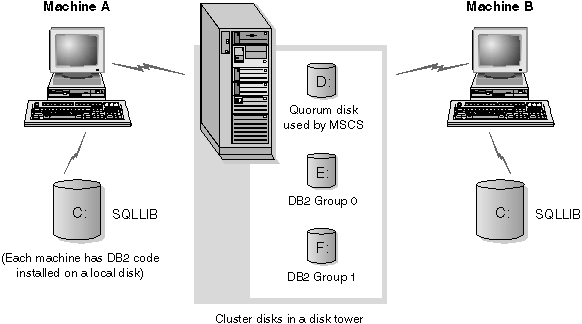

You can set up your database system so that if a machine fails, the database server on the failed machine can run on another machine. On Windows NT, you implement failover support with Microsoft Cluster Server (MSCS). To use MSCS, you require Windows NT Version 4.0 Enterprise Edition with the MSCS feature installed.
MSCS can perform both failure detection and the restarting of resources in a clustered environment, such as failover support for physical disks and IP addresses. (When the failed machine is online again, resources will not automatically fall back to it, unless you previously configure them to do so. For more information, see Fallback Considerations.)
Before you enable DB2 instances for failover support, perform the following planning steps:
When you set up failover support, it can be for an existing instance, or you can create a new instance when you implement the failover support.
To enable failover support, perform the following steps:
After you finish enabling the instance for failover support, your configuration will resemble Figure 63.
Figure 63. Example MSCS Configuration
 |
The following sections describe the different types of failover support, and how to implement them. Before performing any of the steps described below, you must already have the MSCS software installed on every machine that you want to use in an MSCS cluster. In addition, you must also have DB2 installed on every machine.